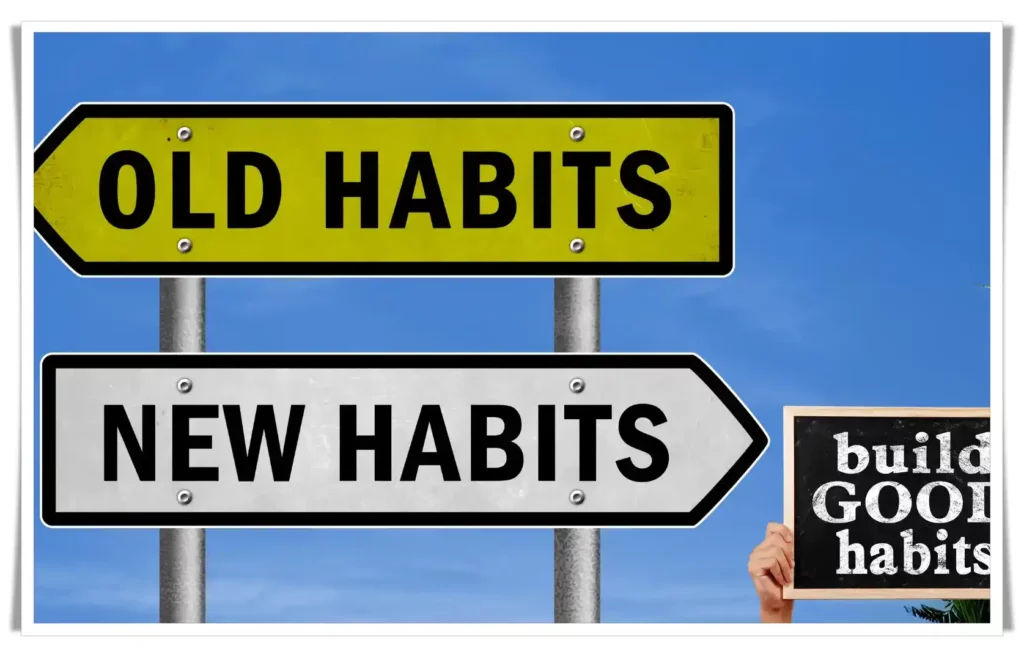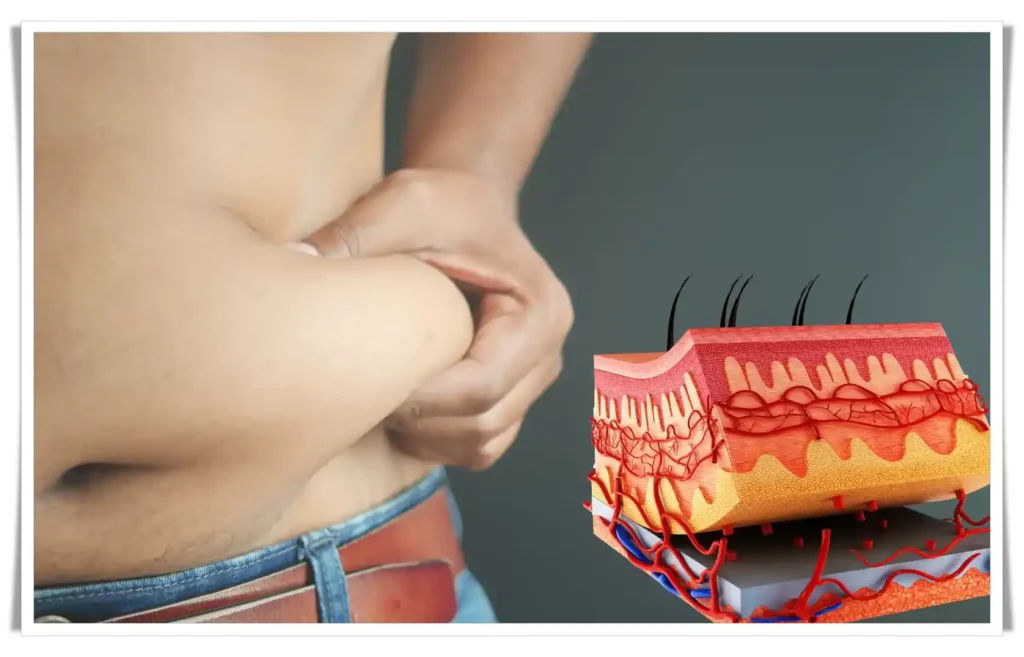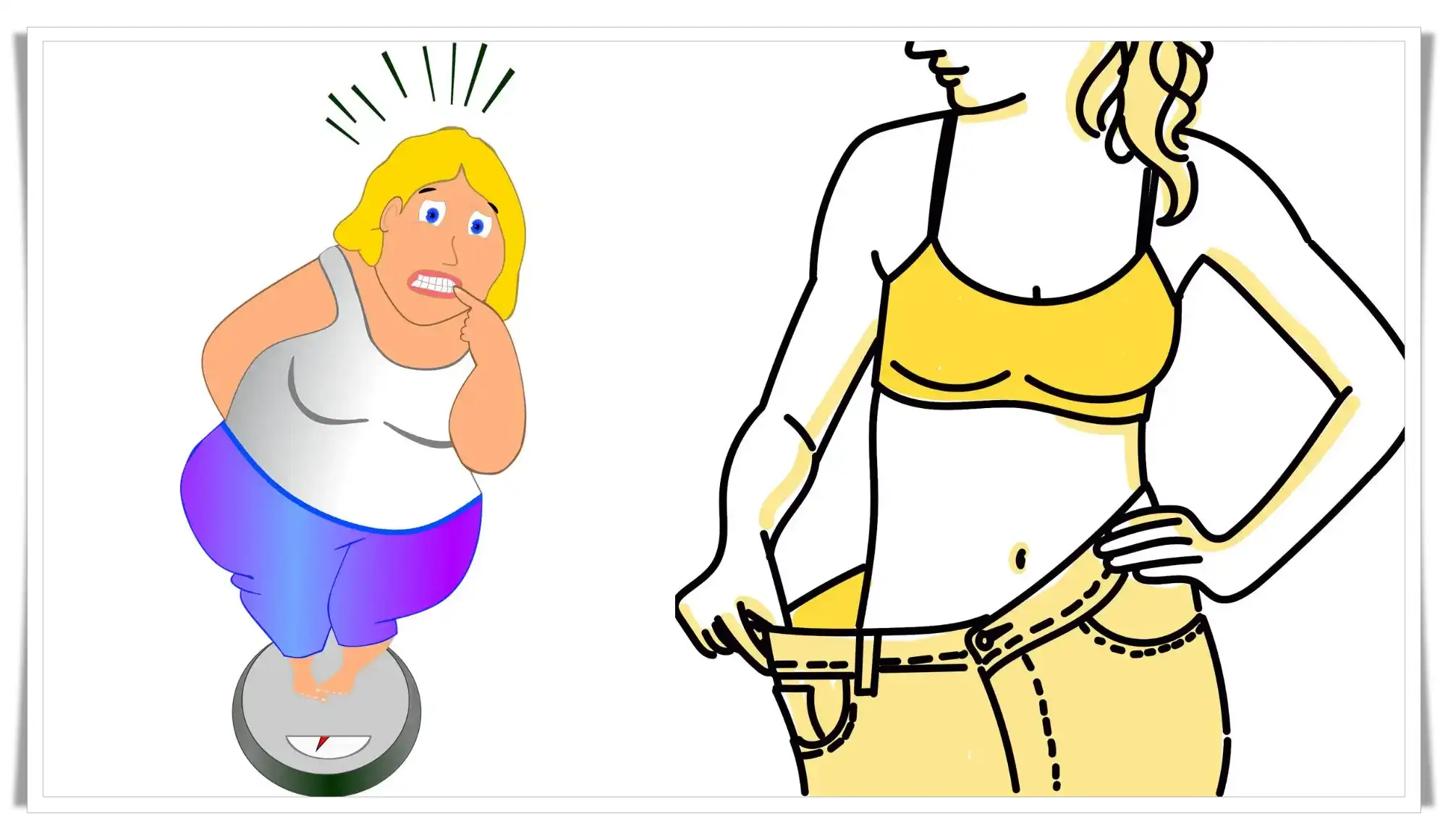Why Give Up Weight Loss Diets to Lose Weight Healthily?
In the age of instant gratification, weight loss diets have become a go-to solution for many. With so many diets promising spectacular results, it’s easy to get caught up in the cycle of short-term success followed by long-term disappointment. But what if I told you that the secret to losing weight healthily isn’t about following these diets but rather about embracing a more sustainable approach? Here’s how I managed to lose over 25 kilograms without starving myself or compromising my health.
My "Secret" to Losing Weight Healthily
The cornerstone of my success wasn’t a magic pill or a trendy diet but a gradual change in my lifestyle. As I slowly replaced unhealthy habits with healthier ones, weight loss became a natural side effect. This wasn’t a rapid transformation but a steady journey towards a healthier me, mirroring the slow accumulation of extra pounds over the years. The key to maintaining a normal weight lies in a dramatic yet gradual shift in lifestyle, not in short-term dietary fads.
Why Give Up Weight Loss Diets?

The first step on the road to healthy weight loss is to abandon weight loss diets altogether. While these diets may offer short-term results, allowing you to shed pounds quickly, they are often unsustainable in the long run. Most diets are nutrient-deficient, temporary, and set you up for the notorious yo-yo effect.
The Yo-Yo Diet Effect
The yo-yo effect occurs when you lose weight rapidly, often through extreme calorie restriction or starvation, only to regain the weight—and often more—once the diet ends. This happens because starvation slows down your metabolism, leading to slower calorie burning. When you return to your pre-diet eating habits, the slower metabolism causes you to gain weight even faster, just like a yo-yo that spins back up quicker than it fell.
Conducting an Audit of Your Habits
Before making any changes, start by auditing your current habits. Do you frequently opt for fast food over home-cooked meals because you believe you don’t have time? Examine your daily activities, including what you eat and drink, how much you sleep, work, spend time online, watch TV, read, interact with others, and enjoy nature.

This audit will help you identify where you might be wasting precious time—time that could be better spent cooking nutritious meals or engaging in other health-promoting activities.
Quality Over Quantity: Focus on Food Quality
Calorie counting can be helpful, but it’s crucial to understand that not all calories are created equal. A 100-calorie serving of highly processed food is vastly different from 100 calories of raw, whole foods like vegetables, fruits, meat, grains, or nuts.
Ultra-processed foods are often low in nutrients, leaving your body craving more food despite being full. These foods are also easy to overeat because they require little effort to chew and digest. Instead, focus on choosing nutrient-dense foods that nourish both your body and your microbiome—the community of beneficial microorganisms in your gut.
Managing Food Quantity
Once you’ve reduced your intake of ultra-processed foods, you can begin to adjust the amount of food you consume. There’s no one-size-fits-all answer to how many calories you should eat. Your caloric needs depend on your level of physical activity and daily energy expenditure. For instance, a sedentary person typically requires fewer calories—about 2,000 per day for women and 2,400 for men.
Healthy vs. Ultra-Processed Foods
| Aspect | Healthy Whole Foods | Ultra-Processed Foods |
|---|---|---|
| Nutrient Density | High | Low |
| Satiety | Longer-lasting fullness | Quick hunger return |
| Processing Level | Minimal | Extensive |
| Ingredients | Natural, recognizable | Artificial additives, preservatives |
| Impact on Weight Loss | Supports healthy weight loss | Promotes weight gain, unhealthy fat |

Healthy vs. Ultra-Processed Foods
| Aspect | Healthy Whole Foods | Ultra-Processed Foods |
|---|---|---|
| Nutrient Density | High – Whole foods like vegetables, fruits, and grains are packed with essential nutrients. Learn more about nutrient density from the CDC. | Low – Ultra-processed foods are often stripped of nutrients during processing. |
| Satiety | Longer-lasting fullness – Whole foods are rich in fiber, helping you stay full longer. Read about the importance of fiber from Harvard T.H. Chan. | Quick hunger return – Processed foods lack fiber, leading to quicker hunger. |
| Processing Level | Minimal – Foods are consumed as close to their natural state as possible. Explore the benefits of whole foods at Mayo Clinic. | Extensive – Ultra-processed foods are highly modified and contain artificial ingredients. |
| Ingredients | Natural, recognizable – Whole foods contain ingredients you would find in a typical kitchen. Learn about healthy eating patterns from MyPlate. | Artificial additives, preservatives – Ultra-processed foods contain many artificial ingredients not found in a home kitchen. |
| Impact on Weight Loss | Supports healthy weight loss – Nutrient-rich, whole foods help maintain a healthy weight. | Promotes weight gain – The low nutrient density and high calorie content of processed foods contribute to weight gain. |
Understanding Visceral Fat vs. Subcutaneous Fat
When your diet is rich in ultra-processed foods, meeting both your caloric and nutrient needs becomes nearly impossible. As a result, you’ll likely consume more calories than your body needs, leading to fat storage.
Fat itself isn’t inherently bad; it serves as an essential energy reserve. However, the problem arises when fat cells, especially those around organs (visceral fat), become overstuffed and unhealthy. Unlike subcutaneous fat (fat stored under the skin), visceral fat poses a greater risk to your health. This type of fat is associated with serious health issues, such as heart disease and diabetes.

Interestingly, fat isn’t always visible on the outside. The term TOFI (Thin Outside, Fat Inside) refers to individuals who appear slim but carry excess visceral fat. This highlights that being skinny doesn’t necessarily equate to being healthy.
Mindful Eating: Timing and Frequency
The timing and frequency of meals are just as important as the quality and quantity of food. Your body needs breaks from food, both at night and between meals.
One effective strategy is intermittent fasting, which involves extending the period between your last meal of the day and your first meal of the next day. A 16-hour fast can be achieved by not eating after 7 PM and having breakfast at 11 AM the following day. While it might take a few weeks to adjust, this eating pattern can significantly benefit your health and weight loss efforts.
Avoid emotional eating, Emotional eating is a common challenge that can sabotage even the healthiest weight loss efforts. Often, we turn to food for comfort when we're stressed, anxious, bored, or even happy. However, this type of eating is usually disconnected from actual hunger and can lead to overeating, especially of unhealthy, high-calorie foods.
To avoid emotional eating, it's essential to recognize the emotional triggers that lead to cravings and find alternative coping mechanisms, such as engaging in physical activity, practising mindfulness, or seeking support from friends and family. By addressing the root causes of emotional eating, you can develop healthier habits that support your overall well-being and long-term weight management goals.
What to Eat for Healthy Weight Loss
The first step towards a healthier diet—and a healthier weight—is to eliminate ultra-processed products. Learning how to shop for and choose healthy foods is crucial. Chris van Tulleken, in his book Ultra-Processed People, offers a simple definition: if a food product comes in a package and contains at least one ingredient you wouldn’t find in a typical kitchen, it’s likely ultra-processed.
For example, if the label lists food additives, emulsifiers, sweeteners, gums, flavours, dyes, .or color stabilizers, it’s an ultra-processed food. Even products labeled as organic, vegan, or "healthy" can be ultra-processed if they meet these criteria.

Processed meats, like sausages, also fall into this category and should be avoided. The International Agency for Research on Cancer classifies processed meat as carcinogenic to humans. Processed meat includes any meat that has been preserved or flavored through methods such as smoking, drying, or adding chemical preservatives.
In summary, a healthy diet excludes pastries, margarine, sugary drinks, energy drinks, alcohol, and cigarettes.
What You Can Eat Occasionally
The World Health Organization doesn’t recommend completely eliminating meat from your diet. While I personally gave up meat for health and ethical reasons, I don’t condemn its consumption. What matters is the quality of the meat, how it’s prepared, and how often it’s eaten.
For a healthy diet, find a reliable source of good-quality meat and cook it at home using familiar ingredients. The longest-lived people in the world, those in the "Blue Zones," consume meat only about five times a month.
Reducing added sugar is another essential step. Even products that don’t taste sweet can contain added sugar. By eliminating these from your daily diet, you’ll take a significant step towards healthier eating. When you do indulge in sweets, opt for homemade treats made from simple, known ingredients, allowing you to enjoy desserts without harmful additives. These should be enjoyed only occasionally.
Examples of Vegetables from My Diet
Here’s a list of vegetables that have become staples in my diet:
| Vegetables | Legumes | Herbs & Greens | Root Vegetables | Fruits (Botanical) | Other |
|---|---|---|---|---|---|
| Broccoli | Chickpeas | Dill | Carrots | Tomatoes | Mushrooms |
| Cauliflower | Lentils | Parsley | Beets | Cucumbers | Edamame |
| Cabbage | Beans | Spinach | Sweet potatoes | Bell peppers | Zucchini |
| Zucchini | Peas | Arugula | Eggplant | Garlic | |
| Lettuce | Basil | Onions |
These are just a few examples. I also include various fruits, which I prefer to eat whole rather than juiced or pureed, to retain their full nutritional benefits.
Whole Grains and Seeds
Incorporating whole grains and seeds into your diet is another key to healthy eating. Whole grains should be unrefined and consumed as close to their natural state as possible. Investing in a bread maker to make your own whole grain bread is a worthwhile option, or choose store-bought bread that’s free of sugar and additives.
Seeds such as flax, chia, and hemp are excellent sources of omega-3 fatty acids. They can be added to salads, mixed with fruits, or incorporated into oatmeal.
Lean Meat and Fish
When it comes to meat, choose lean cuts from reliable sources. Poultry, such as chicken and turkey, raised without antibiotics, can be a healthy choice when cooked properly—not fried.
The same goes for fish. Opt for wild-caught fish rather than farmed varieties, as wild fish feed on algae, making them a natural source of omega-3 fatty acids.
Fermented Foods: Kefir, Yogurt, and Pickles
Fermented foods like kefir, yogurt, and pickles are powerful allies in maintaining a healthy digestive system and overall well-being. These foods are rich in both prebiotics and probiotics, two essential components for gut health. Prebiotics are non-digestible fibers that serve as food for the beneficial bacteria living in your gut. By nourishing these bacteria, prebiotics help to maintain a balanced gut microbiome, which plays a critical role in digestion, immune function, and even mental health.
Probiotics, on the other hand, are live microorganisms that directly introduce beneficial bacteria into your digestive system. These "good" bacteria help to crowd out harmful pathogens, improve nutrient absorption, and support the production of essential vitamins. Regular consumption of probiotic-rich foods like kefir and yogurt can enhance your body's ability to break down and absorb nutrients, while also promoting a stronger immune response.

Kefir, a fermented milk drink, is particularly potent, often containing a broader spectrum of probiotics than yogurt. It's also a good option for those who are lactose intolerant, as the fermentation process breaks down much of the lactose, making it easier to digest. Yogurt, another popular fermented dairy product, is widely recognized for its gut health benefits and is easily incorporated into meals and snacks.
Pickles, when naturally fermented (such as in brine, rather than vinegar), offer a plant-based source of probiotics. These tangy treats not only add flavor to your meals but also contribute to a balanced gut flora, which is essential for maintaining a healthy weight and preventing digestive issues.
Food Supplements in Moderation
While many dietary supplements are more about marketing than actual benefits, some can be useful. Choose supplements with minimal ingredients—such as a protein supplement made solely from peas.
FAQs
FAQ 1: Why should I give up weight loss diets if they help me lose weight quickly?
Answer: While weight loss diets can lead to rapid weight loss in the short term, they are often unsustainable and can be harmful in the long run. Many diets are nutrient-deficient and can slow down your metabolism, leading to the yo-yo effect, where you regain the lost weight—and sometimes more—once you return to your normal eating habits. A healthier approach is to focus on sustainable lifestyle changes that promote long-term weight management without compromising your health.
FAQ 2: What are some healthier alternatives to weight loss diets?
Answer: Healthier alternatives to traditional weight loss diets include focusing on whole, nutrient-dense foods, managing portion sizes, and incorporating regular physical activity into your routine. Practices like mindful eating and intermittent fasting can also support healthy weight loss by helping you tune into your body's hunger and fullness signals, and by giving your digestive system regular breaks.
FAQ 3: How can I avoid emotional eating?
Answer: To avoid emotional eating, it's important to recognize the emotional triggers that lead to cravings. Develop alternative coping mechanisms such as engaging in physical activity, practicing mindfulness or meditation, or talking to a friend or therapist. Keeping a food diary to track when and why you eat can also help you identify patterns and make healthier choices when emotions run high.
FAQ 4: What role do fermented foods play in weight loss?
Answer: Fermented foods like kefir, yogurt, and pickles play a crucial role in weight loss by supporting a healthy gut microbiome. These foods are rich in probiotics, which introduce beneficial bacteria into your gut, and prebiotics, which feed these bacteria. A balanced gut microbiome improves digestion, enhances nutrient absorption, and supports overall metabolism, all of which contribute to healthy weight management.
FAQ 5: Can I still eat meat and sweets if I want to lose weight healthily?
Answer: Yes, you can still eat meat and sweets, but moderation and quality are key. Choose lean meats from reliable sources and limit your consumption to a few times a month, as recommended by studies on the longest-living populations. For sweets, try to eliminate added sugars from your daily diet and opt for homemade desserts made with natural ingredients. These occasional treats can be part of a balanced, healthy diet that supports long-term weight loss.
How to Lose Weight Healthily, Summarized in a Few Sentences
In conclusion, healthy weight loss isn’t about quick fixes or strict diets. It’s about making mindful, gradual changes to your lifestyle that you can sustain over the long term. Focus on the quality and quantity of food, meal timing, and incorporating a variety of plant-based foods, lean meats, fermented dairy products, and whole fruits into your diet. Allow yourself occasional indulgences but keep them rare.
Remember, healthy weight loss doesn’t happen overnight, just as weight gain doesn’t. Be patient, make changes at your own pace, and focus on long-term health rather than short-term results.

Resources
- CDC Nutrition - Linked under "Nutrient Density" to provide readers with detailed information about the importance of nutrient-rich foods.
- Harvard T.H. Chan – Fiber - Linked under "Satiety" to explain the benefits of fiber in whole foods and its role in keeping you fuller for longer.
- Mayo Clinic – Whole Foods - Linked under "Processing Level" to offer insights into why consuming whole foods is beneficial for health.
- MyPlate – Healthy Eating Patterns - Linked under "Ingredients" to guide readers on how to build a healthy diet based on natural, recognizable ingredients.





